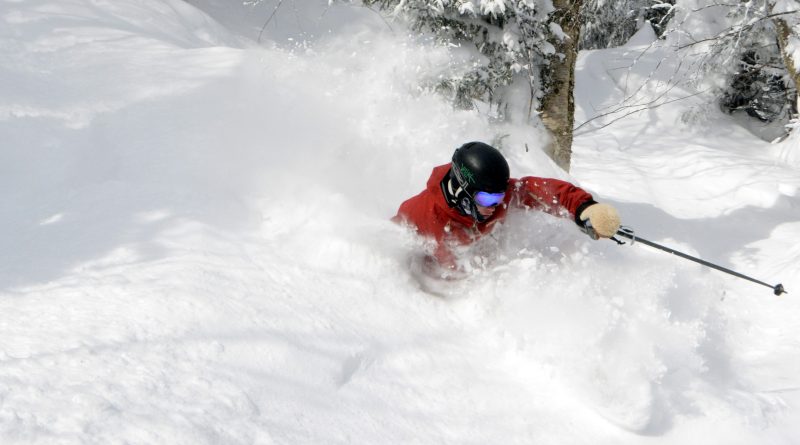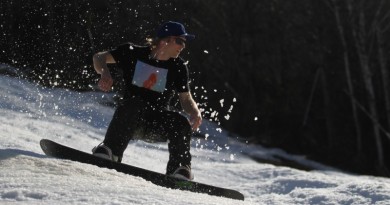Inside Sugarbush’s Sale
Here’s what Sugarbush owner Win Smith and Alterra Mountain Company CEO Rusty Gregory have to say about Sugarbush’s acquisition, announced November 13, 2019. On January 14, 2020, the deal was finalized.
On November 13, Sugarbush Resort owner and president Win Smith announced that the resort’s parent company, Summit Ventures NE LLC had entered into a purchasing agreement with Denver-based Alterra Mountain Company, a privately held company that owns 14 resorts across North America, including Stratton Mountain Resort in Vermont and partners with an additional 27 ski areas across the globe. As the company is privately held, the price Sugarbush sold for was not disclosed.
“I don’t foresee any changes this coming season—we have the same products, the same plans, the same budgets, the same brand, the same website. We even have the same employee handbook and benefits,” says Smith. “All of our passes will remain exactly as they were sold for this year.”
However, Smith expects Alterra to bring the sort of resources that fuel innovation. “I think we’ll see a benefit when it comes to purchasing power,” he said. “For example, next year when we buy a new groomer, I think we’ll have a more competitive discussion than if we were doing it all by ourselves,” said Smith, adding the same logic applies to employee healthcare.
According to Alterra Mountain Company CEO Rusty Gregory, the company has been interested in Sugarbush since 2017, when Alterra first formed. In the past few years, Sugarbush has been part of Alterra’s Ikon pass.
“I think we’re sort of kindred spirits,” says Gregory of Win Smith. Prior to his role as CEO of Alterra, Gregory served as CEO of Mammoth Mountain Ski Area in Mammoth Lakes, Calif. for 20 years. Like Sugarbush, Mammoth had strong roots as an independent operation with a dedicated local following and strong branding. Said Gregory of Smith: “He’s had a personalized vision of what Sugarbush can be and he likes to do things his own way, even when that means taking on difficult projects. In many ways, I think there’s a lot in common there with the way I thought about Mammoth.”
What Changed?
As Smith outlined in a Nov. 13 letter to skiers and riders, the escalating cost of doing business (now and in the future) due to climate change and other factors in Vermont convinced him it was time to bring in a new owner to ensure the resort’s longevity. “The recent acquisition of 16 Peak Resorts by Vail was the tipping point in my decision to sell,” wrote Smith, of the acquisition that was completed this fall. Vail Resorts now owns Stowe, Okemo and Mount Snow in Vermont, and owns or operates a total of 34 ski areas.
According to Smith, the stars aligned for a sale this fall after Sugarbush celebrated a record season in 2018-2019 and its 60th anniversary. Smith reports that Sugarbush saw about 400,000 skier and rider visits last season—a 10 percent increase over the season prior.
“If you look at business for a long time, you kind of learn that there are two things you want to have if you’re going to sell,” says Win Smith. “First, you want to do it when you don’t have to sell and you’re doing well. Second, you want to identify the right buyer. I’ve known David Perry, the former COO of Alterra for a long time. And this fall Jim Crown, one of the Crown family that put in some of the investment to help form Alterra, came to visit Sugarbush. That, and the fact that they were not going to change up the team here and that I get to stay on and manage the resort, at least through the transition, meant a lot.”
In fact, Alterra has done little to change up the teams at Stratton and in the past few years, the company has invested upwards of $6 million in new lifts, a mountain bike park and other improvements.

According to Smith, this was not the first time in his 20 years of ownership at Sugarbush that he has been approached by an interested buyer.
When asked if he ever talked to Vail Resorts about an acquisition, he said, “You know, I’m not going to say that I did or I didn’t. But I would say that I’ve had numerous inquiries by people—you could guess who they would be—over the years.”
Gregory says that Peak Resorts’ sale wasn’t a contributing factor in the company’s interest in Sugarbush, saying “We’ve been interested in Sugarbush for quite some time.”
Of Vail Resorts’ recent acquisition of Peak Resorts, Gregory says: “I thought the ownership at Peak Resorts did a great job. They have a very interesting public model of an aggregation of a lot of resorts. We were very aware that they were for sale, but Sugarbush just fits much better. We prefer to move resort by resort, rather than taking on an already configured platform.”
According to Gregory, it’s Sugarbush’s fiercely independent spirit, unique brand and loyal clientele that make it a perfect match with Alterra Mountain Company.
“Win has done a great job of investing a lot of money in the resort. That will continue with us,” says Gregory. “We know that what we are buying is a great vision and plan that Win and his leadership team have created, and we intend to help them execute that vision—perhaps a little faster than without Alterra’s ownership.”
Size has its financial advantages.
Smith anticipates the trend of industry consolidation will continue as it has in other industries before skiing. “At some point in time, it ends because you’ve kind of filled up your coffers, either in terms of implementation or in terms of capital. My guess is that Vail Resorts and Alterra will continue to grow and look for the right acquisitions.”
The thought of slowing acquisitions catalyzed Smith’s decision to sell. “As I’ve looked at how [Alterra has] managed their portfolio of iconic destinations that maintain their own brand, their own cultural identity—they’ve proven very committed to the local communities and to decentralized management—it was an approach I thought might work well here as opposed to another organization that might centralize that.” For example, Sugarbush’s management team will remain the same.
With the sale of Sugarbush, there are fewer and fewer ski areas in the Northeast that draw the sort of substantive skier visits that have proven to attract large companies. “We were one of the last three, I think, in the northeast that had more than 250,000 skier visits a year,” said Win Smith.
Representatives of Alterra Mountain Company have also toured Jay Peak, suggesting that the company’s interest in the resort was piqued.
When asked whether Alterra Mountain Company is still interested in Jay Peak, Gregory said, “We are very quiet about what we are looking at, but I can tell you that we are very focused on the East.”
Why?
“There is a large population here of very passionate skiers and riders that travel west and to Europe and occasionally even to Asia… Proximity to large population centers is a big part of the basis for how we look at partnership and acquisition potential. Looking through that lens, we see a lot of opportunity in the East.”
Gregory also explained a concept he calls “the experiential ladder” of how people consume mountain experiences. “They might start visiting their local drive-to resort. Then, as what they are looking for at those resorts changes, they start taking longer trips with an overnight or two or three. And then, we see many move up to the next mountain by jumping in a plane to travel. We want to be able to accommodate that within our portfolio.”
Despite this broader vision, Gregory sees a renewed opportunity for Vermont’s remaining 10 independently owned ski areas. “I really do believe that the bigger Alterra and Vail get, the bigger the gaps in the market are for well-positioned and strategic independents,” said Gregory.
Though he’s a resident of Colorado, he says he’s no stranger to scrappy East Coast skiing. “I’ve spent some time in Vermont over the years, and it’s very clear to me that there is a rugged individualistic spirit in the state, particularly in the ski industry, and I think you can already see that playing out for its independent ski areas.”
That, along with Gregory’s experience “being brought up in the ski industry” under the leadership of Mammoth Mountain founder Dave McCoy, one of the most notoriously free-spirited and fiercely independent leaders in the industry’s canon of legends, is why Alterra prefers to support a diverse array of brands.
“The landscape is constantly changing. And sometimes the best innovation can come from the grassroot resorts, who really know their clientele, their base, over the big ones.”
For Smith’s part, he’ll be staying on as president through the transition. He still plans to compete in Sugarbush’s annual pond skim this spring—and to get at least 100 days of skiing in this season.
“I’ll be a regular at the pond skim at least until I get all my grandkids across,” he says. Four of the six have done the event.
Look for him in the Hawaiian shirt this April.
Featured Photo courtesy Sugarbush Resort/Jeb Wallace-Brodeur



Pingback: Sugarbush Owner Win Smith's Open Letter – VT SKI + RIDE
Pingback: Alterra Buys Sugarbush – VT SKI + RIDE
Pingback: Alterra Mountain Company acquires Sugarbush Resort – The Middlebury Campus